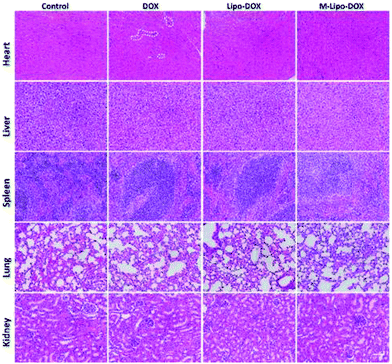 Open Access Article
Open Access ArticleCreative Commons Attribution 3.0 Unported Licence
Correction: Highly penetrative liposome nanomedicine generated by a biomimetic strategy for enhanced cancer chemotherapy
Yali
Jia
ab,
Zonghai
Sheng
b,
Dehong
Hu
b,
Fei
Yan
b,
Mingting
Zhu
ab,
Guanhui
Gao
c,
Pan
Wang
a,
Xin
Liu
b,
Xiaobing
Wang
*ab and
Hairong
Zheng
*b
aKey Laboratory of Medicinal Resources and Natural Pharmaceutical Chemistry, Ministry of Education, College of Life Sciences, Shaanxi Normal University, Xi'an 710119, China. E-mail: wangxiaobing@snnu.edu.cn; hr.zheng@siat.ac.cn
bPaul C. Lauterbur Research Center for Biomedical Imaging, Institute of Biomedical and Health Engineering, Shenzhen Institutes of Advanced Technology, Chinese Academy of Sciences, Shenzhen 518055, China
cPaul-Drude Institut, Leibniz-Institut im Forschungsverbund, Hausvogteiplatz 5-7, 10117 Berlin, Germany
First published on 13th May 2021
Abstract
Correction for ‘Highly penetrative liposome nanomedicine generated by a biomimetic strategy for enhanced cancer chemotherapy’ by Yali Jia et al., Biomater. Sci., 2018, 6, 1546–1555, DOI: 10.1039/C8BM00256H.
The authors regret that Fig. 7, depicting H&E staining to estimate the effect of the different treatments on the structural changes of major organs (heart, liver, spleen, lung and kidney) in C6 glioma-bearing mice, contained a mistake. An identical lung tissue in the M-Lipo-Dox group was wrongly typeset as being part of the DOX group. The correct version of Fig. 7 is shown below. This correction does not change any description, results or conclusions of the original paper. The authors also regret that the affiliations of Zonghai Sheng and Hairong Zheng were listed incorrectly. The correct affiliations are as shown above.
The Royal Society of Chemistry apologises for these errors and any consequent inconvenience to authors and readers.
| This journal is © The Royal Society of Chemistry 2021 |

